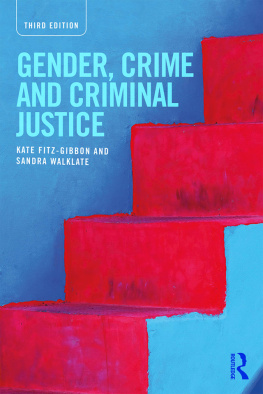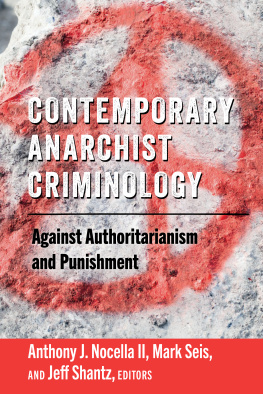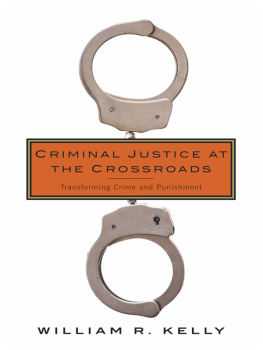ENVIRONMENTAL CRIME
ENVIRONMENTAL CRIME
The Criminal Justice Systems Role in Protecting the Environment
Yingyi Situ
David Emmons
Copyright 2000 by Sage Publications, Inc.
All rights reserved. No part of this book may be reproduced or utilized in any form or by any means, electronic or mechanical, including photocopying, recording, or by any information storage and retrieval system, without permission in writing from the publisher.
For information:
 | Sage Publications, Inc.
2455 Teller Road
Thousand Oaks, California 91320
E-mail:
Sage Publications Ltd.
6 Bonhill Street
London EC2A 4PU
United Kingdom
Sage Publications India Pvt. Ltd.
M-32 Market
Greater Kailash I
New Delhi 110 048 India |
Printed in the United States of America
Library of Congress Cataloging-in-Publication Data
Situ, Yingyi.
Environmental crime: The criminal justice systems role in protecting the environment / by Yingyi Situ and David Emmons.
p. cm.
Includes bibliographical references and index.
ISBN 0-7619-0036-5 (cloth: acid-free paper)
ISBN 0-7619-0037-3 (pbk.: acid-free paper)
1. Environmental lawUnited StatesCriminal provisions.
2. Offenses against the environmentUnited States.
I. Emmons, David, 1940- II. Title.
KF3775 .S549 2000
345.730242dc21 99-6583
00 01 02 03 04 05 7 6 5 4 3 2 1
Acquiring Editor: | Kassie Gavrilis |
Editorial Assistant: | Anna Howland |
Production Editor: | Denise Santoyo |
Editorial Assistant: | Karen Wiley |
Typesetter/Designer: | Marion Warren |
For Peter, Charles, and Justin and Molly
Contents
Preface
T his book is both a text and a reference work for the emerging field of environmental crimeviolations of environmental law which are subject to criminal prosecution and punishment. Most environmental offenses are processed by regulatory agencies and corrected by civil and administrative remedies. But the most important environmental legislation, enacted during the first bloom of the environmental movement in the 1970s, always contained some criminal sanctions for the worst offenses. The criminalization of environmental wrongs grew in the 1980s and 1990s, a trend we believe will continue. This book charts the new mission of criminal justice in controlling the environment. It examines the nature and causes of four types of environmental crime and reviews the criminal justice systems role in combating them.
This book fills an empty space at the boundaries between criminal justice, criminology, law, and environmental studies. We are both faculty members in the criminal justice program at Richard Stockton College of New Jersey. In 1992, Dr. Emmons designed an undergraduate curricular track in environmental crime. Dr. Situ joined the program to supervise the track and teach its core course on environmental crime. She quickly discovered there were no texts in the field, although other institutions were beginning to offer similar courses. So she proposed we write this book. Our motto has been: If you dont find the book you want, make the book you need. Our hope is that we have made a useful and enduring text for a wider audience.
We wish to extend our thanks to our many faculty colleagues, to Dr. David Carr, Vice President for Academic Affairs, and to Dr. Vera King Farris, President of Richard Stockton College of New Jersey, whose encouragement and support were instrumental to the success of this project. A special thanks goes to the college committees for Distinguished Faculty Fellowships and for Research and Professional Development. Their support to Dr. Situ helped make this book possible. Dr. Situ wishes to express her love for her parents, who gave her the confidence and ability to accomplish this project. Dr. Emmons wishes to express his love for his parents, whose continuing support and example have been an inspiration. Finally, we appreciate the constructive comments of three anonymous reviewers. By adopting most of their suggestions, we have written a better book.
YINGYI SITU
DAVID EMMONS
CHAPTER 1
Introduction
W e and our environment are at risk. Air, water, and soil pollution; hazardous waste disposal; global warming; acid rain; and reduction of the ozone layer threaten the natural environment and endanger peoples health.
Researchers have documented these disturbing trends with accelerating alarm, at least since the publication in 1962 of Rachel Carsons Silent Spring. Government and industry heeded the environmental movements call in the early 1970s and began with uncertain commitment and only partial success to slow further damage to the environment and to repair the worst damage already done. Administrative regulations and technology have been the chief weapons in these efforts.
Since the late 1980s, however, the procedures and perspectives of criminal justice have been applied to the environmental crisis. Environmental violations have been defined as crimes, and violators viewed as criminals; criminal prosecution of the accused and criminal sanctions against the convicted have accelerated. We are witnessing for the first time the criminalization of environmental wrongdoing. This book examines this new development.
Approaches to Defining Crime
T he human assault on the natural environment reaches back to prehistory when our predecessors first burned wood for food, warmth, and light. But the first serious human threat to the environment and public health arose from the Industrial Revolution. Industry began to consume enormous quantities of hydrocarbon fuels and manufacture a vast array of products from raw materials, leaving in their wake hazardous waste and pollution. Although the Industrial Revolution created modern civilization, it became capable of destroying that civilization (Gore, 1993).
Until the 1970s, in the United States, the prevailing view held that the environmental harm from industrial production was the unavoidable price for economic progress. As this view was challenged with increasing frequency in the 1970s and 1980s, the perception grew that damages to the environment and individuals were not inevitable costs but punishable crimes. If pollution and hazardous waste were controllable, then corporations and persons could be held responsible for their offending behaviorand some of this misbehavior could be considered crime. If disasters were not natural acts of God but human catastrophes, then the persons who make them may be committing crimes. The enormity of such highly publicized man-made catastrophes as Love Canal has only deepened this view.
This shift in perspective illustrates the key assertion of labeling theory: that an act is not criminal by virtue of its inherent quality but by virtue of definitions assigned to it by culture and society. These definitions can change over time, as the governments shifting view of drug use demonstrates. Opium, morphine, and other mind-altering drugs were legally available in the early 1900s to consumers. Growing concern about addiction led in 1914 to passage of the Harrison Act, designed to regulate the domestic use, sale, and transfer of opium and coca products. The Marijuana Tax Act of 1937 placed a prohibitive tax of $100 an ounce on the drug. Not until the 1970s, however, did a lawthe Drug Abuse Prevention, Treatment, and Rehabilitation Act (1972)define drug abuse as a crime and prescribe criminal sanctions.






